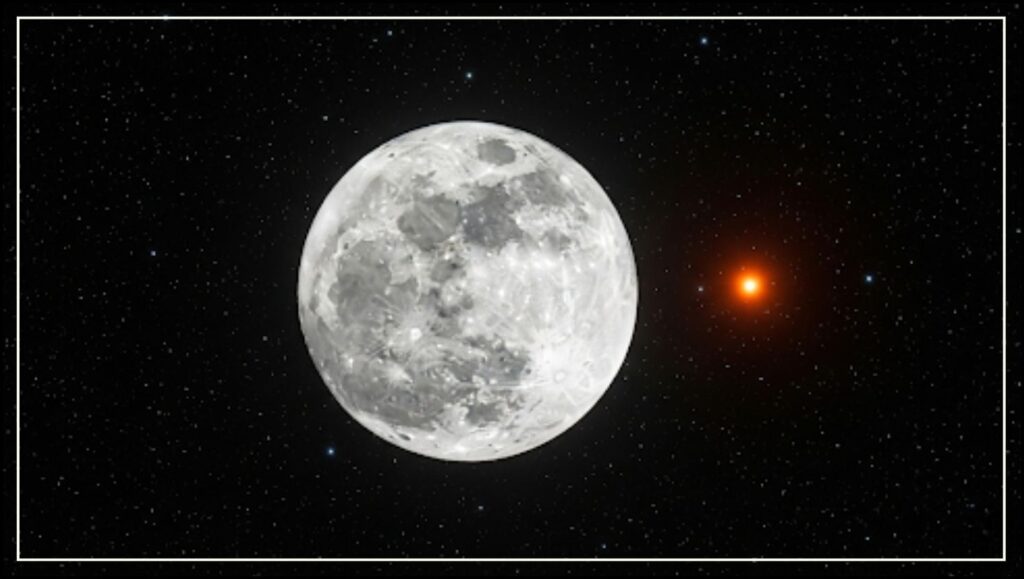Stargazers worldwide are in for a treat this weekend as a bright Moon pairs up with the fiery red supergiant star Antares. This celestial event, a close approach known as a conjunction, will offer a striking visual spectacle for observers, with some regions witnessing the Moon and Antares in an even rarer event known as an occultation.

Skywatchers across the globe will have a prime opportunity to see two of the sky’s most prominent objects appear side-by-side on the nights of Saturday, August 2, and Sunday, August 3. The waxing gibbous Moon will glide past Antares, the brightest star in the constellation Scorpius. This event provides an easy and rewarding target for novice and experienced observers alike.
While the two celestial bodies will appear close from our vantage point on Earth, they are separated by an immense distance. The Moon is our closest celestial neighbor, orbiting at an average distance of about 239,000 miles (384,000 kilometers), according to NASA. Antares, by contrast, is a distant star located approximately 550 light-years away.
How to See the Moon and Antares Conjunction
Viewing this celestial pairing is straightforward. The event will be visible in the evening sky shortly after sunset. Observers should look toward the southern sky (for those in the Northern Hemisphere) or overhead (for those in the Southern Hemisphere) to locate the bright Moon.
Key Viewing Details:
- When: The evenings of Saturday, August 2, and Sunday, August 3, 2025.
- Direction: Look for the Moon in the south-southwest sky after sunset.
- Equipment: No special equipment is needed, as the Moon and Antares are both bright enough to be seen with the naked eye.
“The sheer brightness of the Moon can sometimes make it difficult to spot nearby stars,” said Dr. Preston Dyches, a science communicator at NASA’s Jet Propulsion Laboratory, in a public outreach video. “A simple pair of binoculars can be a great tool. They will cut through the lunar glare and make the beautiful red color of Antares pop.”
What Observers Are Actually Seeing
The event is a celestial conjunction, a term used by astronomers when two objects appear close to one another on the sky’s dome. The weekend’s main event involves the star Antares, a celestial giant whose name holds a story.
The ‘Rival of Mars’
Antares gets its name from ancient Greek, meaning “anti-Ares” or “rival of Mars.” The name reflects its distinct, fiery red color, which often leads to it being confused with the planet Mars when the two are near each other in the sky.
The reddish hue is a result of the star’s relatively cool surface temperature. Antares is classified as a red supergiant and is one of the largest known stars. If it were placed at the center of our solar system, its outer edge would extend beyond the orbit of Mars and into the asteroid belt, according to data from NASA.
“When you look at Antares, you’re seeing a star nearing the end of its life,” explained Dr. Edward Guinan, a professor of astronomy and astrophysics at Villanova University, in a university publication. “These massive stars burn through their fuel rapidly and expand into supergiants. It will eventually end its life in a spectacular supernova explosion, but that won’t happen for thousands of years.”
A Grazing Occultation for Some Viewers
For observers in a specific path across the globe, this weekend’s event will be more than just a close pass. The Moon will actually move directly in front of Antares, an event called a lunar occultation. An occultation occurs when a closer celestial body hides a more distant one from view. For this event on August 2-3, the occultation will be visible across a path stretching from the southern United States through Central America and into parts of South America. Viewers in cities like Miami, Mexico City, and Bogotá will be able to watch the star disappear behind the Moon’s bright edge and reappear on the other side roughly an hour later.
Astronomers, both amateur and professional, often time these events precisely. The data helps them study the Moon’s topography, refine its orbital path, and sometimes detect previously unknown companion stars. This is part of an ongoing series of Antares occultations that began in 2023 and will continue into 2028, according to the International Occultation Timing Association (IOTA).
This recurring celestial alignment is a consequence of the Moon’s orbital path around the Earth. Each month, the Moon passes through the zodiac constellations, including Scorpius constellation, leading to frequent conjunctions with its brightest star. However, the exact proximity and the occurrence of an occultation depend on the precise geometry, making each pass a unique event worth observing.
Earth’s Rotation is Accelerating, Threatening Record-Short Days This Summer
